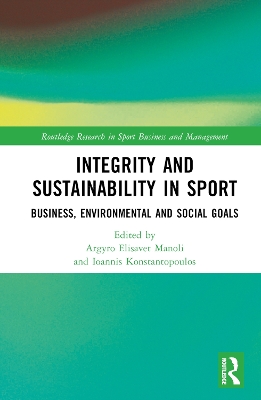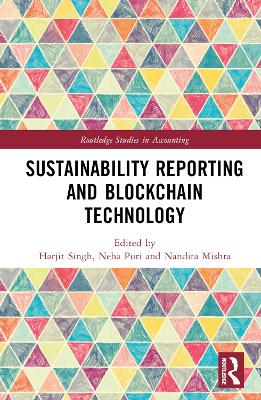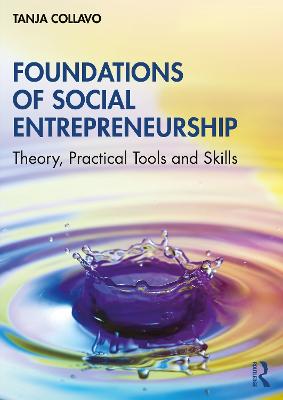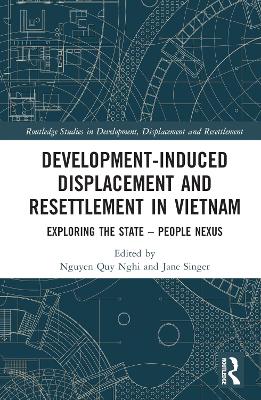Green Innovation in Central and Eastern Europe
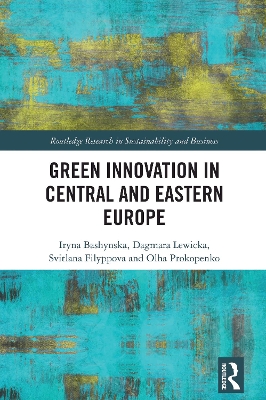 portes grátis
portes grátis
Green Innovation in Central and Eastern Europe
Bashynska, Iryna; Prokopenko, Olha; Lewicka, Dagmara; Filyppova, Svitlana
Taylor & Francis Ltd
11/2024
192
Dura
9781032795676
15 a 20 dias
Descrição não disponível.
Contents
list of figures
list of tables
INTRODUCTION
CHAPTER 1. THE ECOLOGICAL AND ECONOMIC TRANSFORMATION OF BUSINESS TO REALISE A GREEN ECONOMY
1.1 The green economy: essence and features
1.2 The current state of green economy development and the role of international organisations in supporting it
1.3 Strategic planning for the ecological and economic transformation of business
1.4 Drivers and barriers of environmental innovation in organisations
1.5 Strategies and practices of green innovation in organisations
1.6. CO2 recycling: driving sustainable innovation
Notes
References
CHAPTER 2. RECYCLING IN THE CONTEXT OF THE CIRCULAR ECONOMY 3
2.1 Comparison of linear and circular economy concepts: theoretical aspects
2.2 Integration of business models within the circular economy: transition to sustainable production and consumption
2.3 Formation of a circular economy through recycling: economic and environmental aspects
Notes
References
CHAPTER 3. GREEN INNOVATION METRICS AND PERFORMANCE MEASUREMENT
3.1 Key performance indicators (KPIs) for green innovation
3.2 Sustainability reporting and transparency
3.3 Organisational practices supporting green innovation and measuring their effects
3.4 Continual improvement and feedback loops
3.5. Driving Sustainability and green innovation: A Comprehensive Analysis of Aptiv's Initiatives
Notes
References
CHAPTER 4. GREEN LEADERSHIP AND CULTIVATING A SUSTAINABLE ORGANISATIONAL CULTURE
4.1 Nurturing a Culture of Sustainability
4.2 Leading the Way in Sustainable Strategy Execution
4.3 Horizontal support for innovation - trust and positive team relations
4.4 Building employee talent and capacity for green innovation
4.5 Integrating social sustainability in green leadership
4.6 Ethical imperatives in green leadership and governance
Notes
References
CONCLUSIONS
Index
list of figures
list of tables
INTRODUCTION
CHAPTER 1. THE ECOLOGICAL AND ECONOMIC TRANSFORMATION OF BUSINESS TO REALISE A GREEN ECONOMY
1.1 The green economy: essence and features
1.2 The current state of green economy development and the role of international organisations in supporting it
1.3 Strategic planning for the ecological and economic transformation of business
1.4 Drivers and barriers of environmental innovation in organisations
1.5 Strategies and practices of green innovation in organisations
1.6. CO2 recycling: driving sustainable innovation
Notes
References
CHAPTER 2. RECYCLING IN THE CONTEXT OF THE CIRCULAR ECONOMY 3
2.1 Comparison of linear and circular economy concepts: theoretical aspects
2.2 Integration of business models within the circular economy: transition to sustainable production and consumption
2.3 Formation of a circular economy through recycling: economic and environmental aspects
Notes
References
CHAPTER 3. GREEN INNOVATION METRICS AND PERFORMANCE MEASUREMENT
3.1 Key performance indicators (KPIs) for green innovation
3.2 Sustainability reporting and transparency
3.3 Organisational practices supporting green innovation and measuring their effects
3.4 Continual improvement and feedback loops
3.5. Driving Sustainability and green innovation: A Comprehensive Analysis of Aptiv's Initiatives
Notes
References
CHAPTER 4. GREEN LEADERSHIP AND CULTIVATING A SUSTAINABLE ORGANISATIONAL CULTURE
4.1 Nurturing a Culture of Sustainability
4.2 Leading the Way in Sustainable Strategy Execution
4.3 Horizontal support for innovation - trust and positive team relations
4.4 Building employee talent and capacity for green innovation
4.5 Integrating social sustainability in green leadership
4.6 Ethical imperatives in green leadership and governance
Notes
References
CONCLUSIONS
Index
Este título pertence ao(s) assunto(s) indicados(s). Para ver outros títulos clique no assunto desejado.
sustainability goals;sustainable business;green leadership;ethical decision-making;recycling;environmental impacts;Sustainability reporting
Contents
list of figures
list of tables
INTRODUCTION
CHAPTER 1. THE ECOLOGICAL AND ECONOMIC TRANSFORMATION OF BUSINESS TO REALISE A GREEN ECONOMY
1.1 The green economy: essence and features
1.2 The current state of green economy development and the role of international organisations in supporting it
1.3 Strategic planning for the ecological and economic transformation of business
1.4 Drivers and barriers of environmental innovation in organisations
1.5 Strategies and practices of green innovation in organisations
1.6. CO2 recycling: driving sustainable innovation
Notes
References
CHAPTER 2. RECYCLING IN THE CONTEXT OF THE CIRCULAR ECONOMY 3
2.1 Comparison of linear and circular economy concepts: theoretical aspects
2.2 Integration of business models within the circular economy: transition to sustainable production and consumption
2.3 Formation of a circular economy through recycling: economic and environmental aspects
Notes
References
CHAPTER 3. GREEN INNOVATION METRICS AND PERFORMANCE MEASUREMENT
3.1 Key performance indicators (KPIs) for green innovation
3.2 Sustainability reporting and transparency
3.3 Organisational practices supporting green innovation and measuring their effects
3.4 Continual improvement and feedback loops
3.5. Driving Sustainability and green innovation: A Comprehensive Analysis of Aptiv's Initiatives
Notes
References
CHAPTER 4. GREEN LEADERSHIP AND CULTIVATING A SUSTAINABLE ORGANISATIONAL CULTURE
4.1 Nurturing a Culture of Sustainability
4.2 Leading the Way in Sustainable Strategy Execution
4.3 Horizontal support for innovation - trust and positive team relations
4.4 Building employee talent and capacity for green innovation
4.5 Integrating social sustainability in green leadership
4.6 Ethical imperatives in green leadership and governance
Notes
References
CONCLUSIONS
Index
list of figures
list of tables
INTRODUCTION
CHAPTER 1. THE ECOLOGICAL AND ECONOMIC TRANSFORMATION OF BUSINESS TO REALISE A GREEN ECONOMY
1.1 The green economy: essence and features
1.2 The current state of green economy development and the role of international organisations in supporting it
1.3 Strategic planning for the ecological and economic transformation of business
1.4 Drivers and barriers of environmental innovation in organisations
1.5 Strategies and practices of green innovation in organisations
1.6. CO2 recycling: driving sustainable innovation
Notes
References
CHAPTER 2. RECYCLING IN THE CONTEXT OF THE CIRCULAR ECONOMY 3
2.1 Comparison of linear and circular economy concepts: theoretical aspects
2.2 Integration of business models within the circular economy: transition to sustainable production and consumption
2.3 Formation of a circular economy through recycling: economic and environmental aspects
Notes
References
CHAPTER 3. GREEN INNOVATION METRICS AND PERFORMANCE MEASUREMENT
3.1 Key performance indicators (KPIs) for green innovation
3.2 Sustainability reporting and transparency
3.3 Organisational practices supporting green innovation and measuring their effects
3.4 Continual improvement and feedback loops
3.5. Driving Sustainability and green innovation: A Comprehensive Analysis of Aptiv's Initiatives
Notes
References
CHAPTER 4. GREEN LEADERSHIP AND CULTIVATING A SUSTAINABLE ORGANISATIONAL CULTURE
4.1 Nurturing a Culture of Sustainability
4.2 Leading the Way in Sustainable Strategy Execution
4.3 Horizontal support for innovation - trust and positive team relations
4.4 Building employee talent and capacity for green innovation
4.5 Integrating social sustainability in green leadership
4.6 Ethical imperatives in green leadership and governance
Notes
References
CONCLUSIONS
Index
Este título pertence ao(s) assunto(s) indicados(s). Para ver outros títulos clique no assunto desejado.

